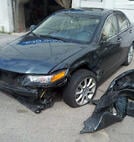 There’s been a joke in the software industry that goes something like this:
There’s been a joke in the software industry that goes something like this:
If automotive technology had kept pace with Silicon Valley, motorists could buy a V-32 engine that goes 10,000 m.p.h. or a 30-pound car that gets 1,000 miles to the gallon — either one at a sticker price of less than $ 50. Detroit's response: "OK. But who would want a car that crashes twice a day?"
It became urban legend that an exchange like this actually happened between Bill Gates and an auto industry executive, either the head of GM or a Ford family member. Interestingly, the item “you’d have to press the start button to shut off the engine” has actually happened in some cars.
The joke makes the point about how different the focus of software engineering can be from the focus of building cars or bridges. In software it’s all about functionality and performance over reliability and security because the implications of an application failing are actually, in many cases, much less severe than those of a car crash or a bridge failure. Sadly, the functionality, performance or time to market often makes a fair business trade-off given customer expectations of software.
In a car, engineers invest more time and cost to address failure or abuse modes and model them so the car can be designed to protect occupants. That picture at the top of this post is my car. It was hit hard as I pulled out from a parallel parking space, and in all likelihood the side curtain airbag saved me from a nasty bang of my head to the left side window. It may be an exaggeration that it saved my life, but thinking how a collision from the side could make the driver’s head hit the side window caused engineers to come up with the mitigation of a side curtain airbag and that certainly made my day!
In application security, this process of thinking about attacks to the application and their mitigations is called Threat Modeling.
Threat modeling is one of the key SDL activities that drive many of the other downstream processes in a security conscious software development lifecycle. Thinking about how the application will and will not be attacked allows the designers, architects, developers and testers to address those cases while not wasting time and money on those that are not relevant.
So I can highly recommend two things: (1) A car with side curtain airbags and (2) An SDL for you software development process that includes threat modeling and education on it. Security Innovation can help you with the second, you car company should provide you the first.


